Who doesn’t love a succulent?
Much like their namesake, they’re irresistibly juicy, and luckily for us, they come in every shape you can imagine and every color of the rainbow.
But finding succulents for terrariums can be tricky (not to mention finding the right terrarium for your succulents).
This post will reveal the best succulent plant picks and everything else you need to know before you embark on your project.
Let’s go.
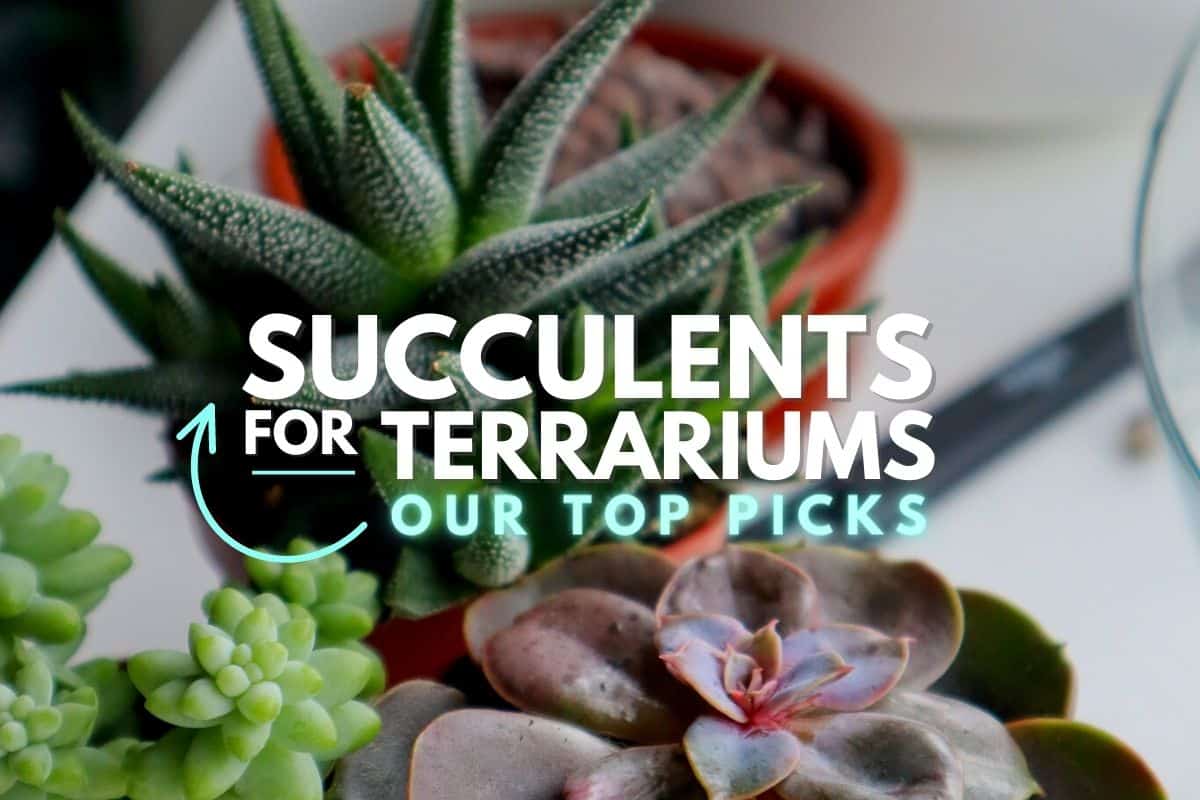
Terrarium Tribe is reader-supported. When you purchase through links on our site, we may earn an affiliate commission (at no further cost to you). 💜
7 Best Succulents for (Open) Terrariums
On the surface, terrariums and succulent plants seem like a match made in heaven.
After all, we see succulent terrariums decorating every inch of Pinterest, so it must be a harmonious pairing – right?
Well, not quite.
A true terrarium, if we’re being scientific, is a sealed ecosystem designed to recreate tropical conditions.
Anyone who enjoys a good succulent will keenly observe that this is a recipe for disaster.
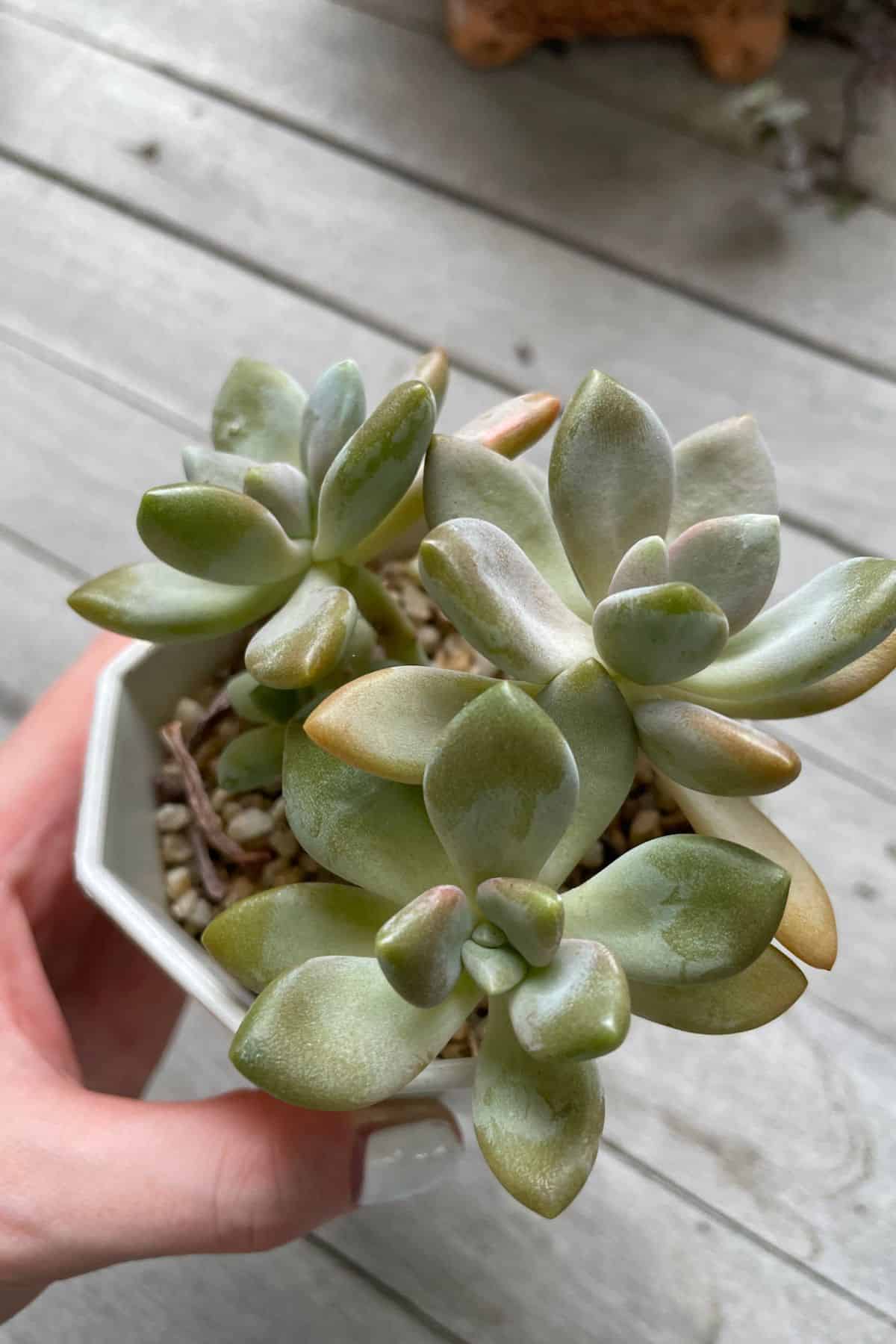
A closed glass container will create the opposite conditions.
So, the best way to have your cake and eat it is to opt for open top terrarium. That way, humidity, and moisture won’t be trapped in the container, and your succulents will enjoy the conditions they deserve. Hurrah!
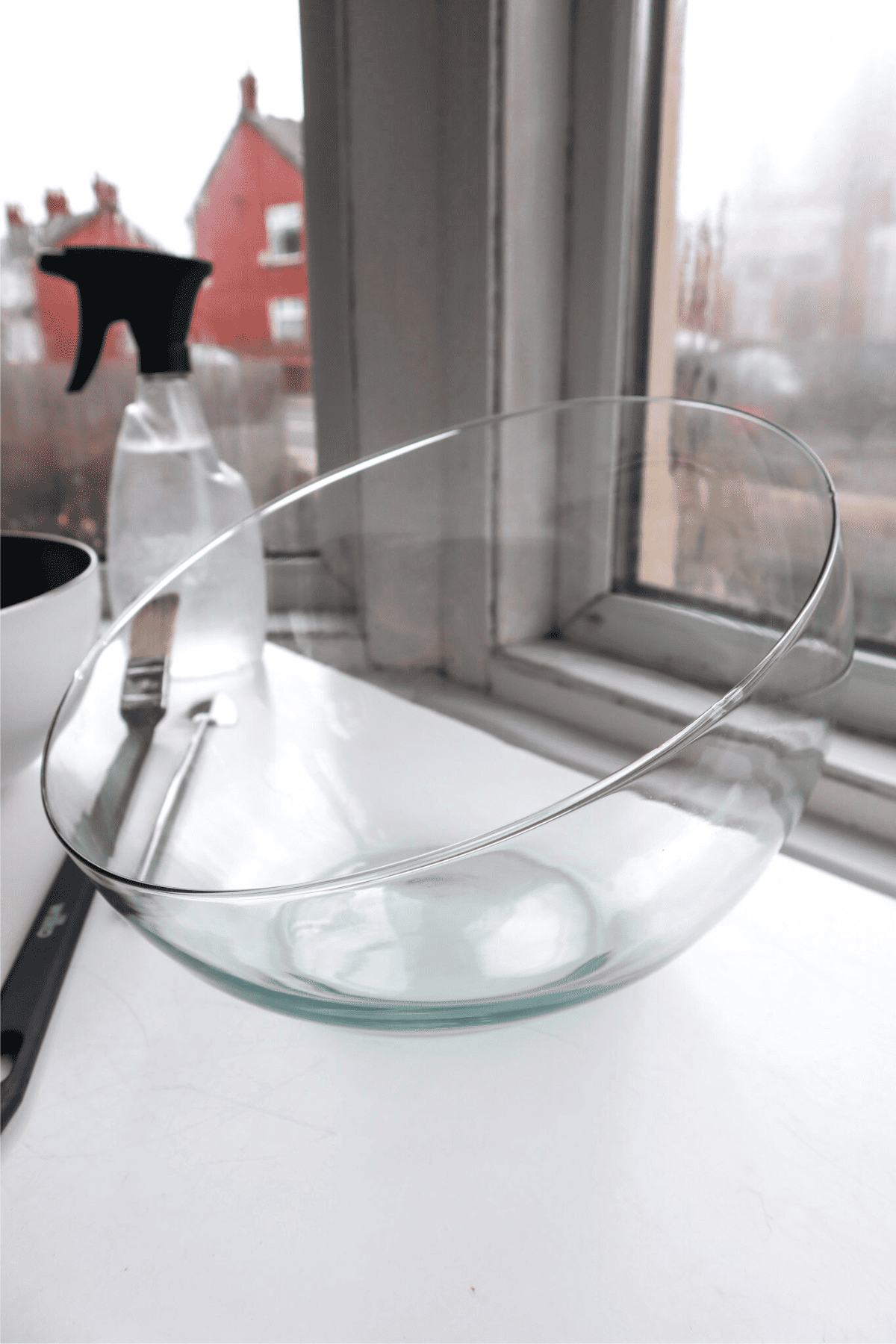
There are some succulents –ish you can use in a tropical closed terrarium, but more on that later.
So what are we waiting for? Let’s dive into the top plant picks to make your succulent terrarium dreams come true.
1 | Echeveria
Echeveria might just be my favorite genus of succulents.
It’s the colors that do it for me – there’s an abundance of dreamy lilacs, baby blues, and soft mint greens (along with some dazzling deeper tones if that’s more your thing).
This pastel Echeveria ‘Cubic Frost’ is stunning.
And it’s no wonder they’re so popular; with clean lines and a creamy, matte surface, some Echeveria look almost like carved sculptures.
There is a rosette for every taste and project in this impressive genus.
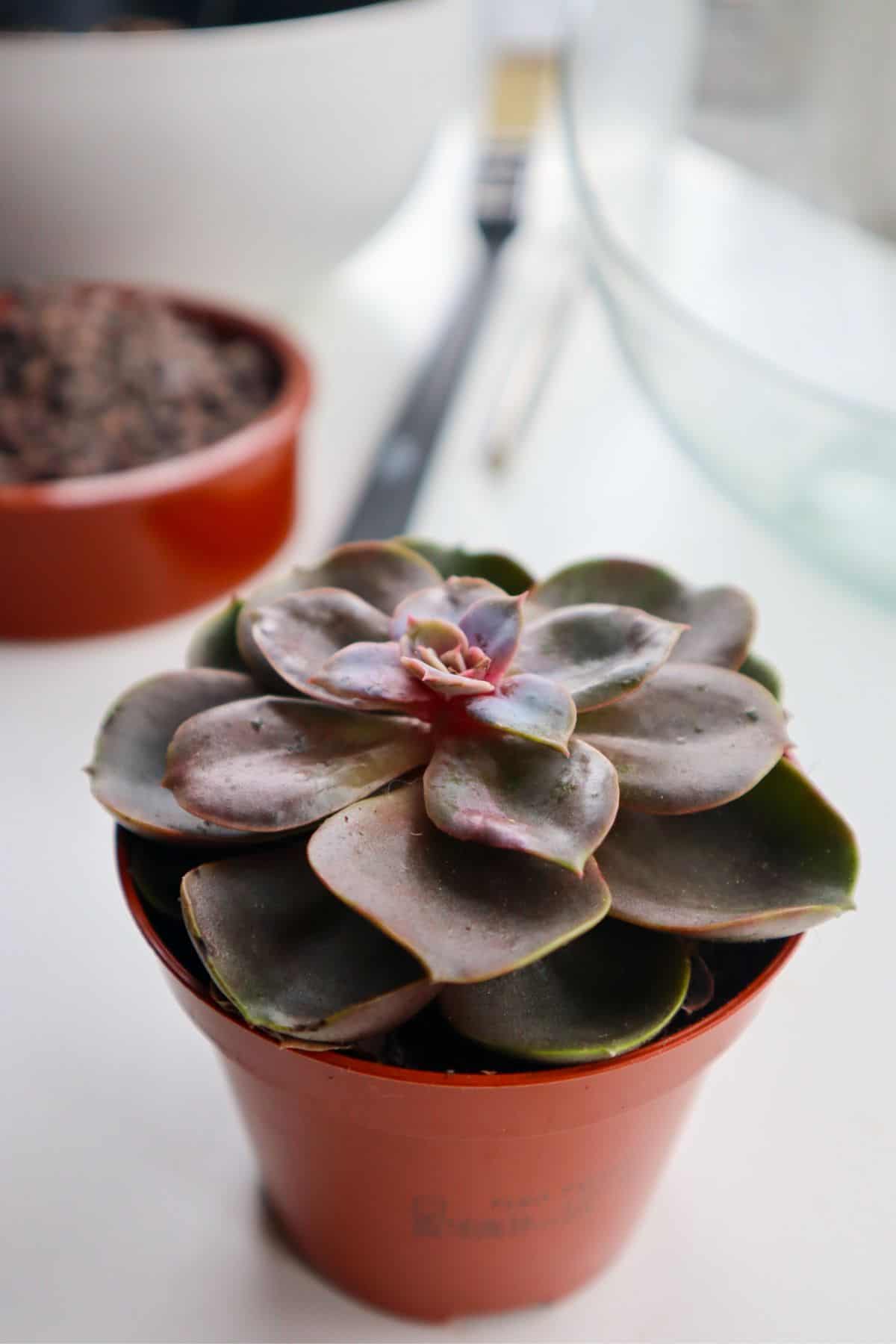
2 | Sedum morganianum ‘Burrito’ (Burro’s Tail/Donkey’s Tail)
With a chunky string of bubbles aesthetic, Sedum ‘Burrito’ is the most fun plant out there.
Young plants may only stand a couple of inches tall, but mature plants can get impressively long – resembling a donkey’s tail.
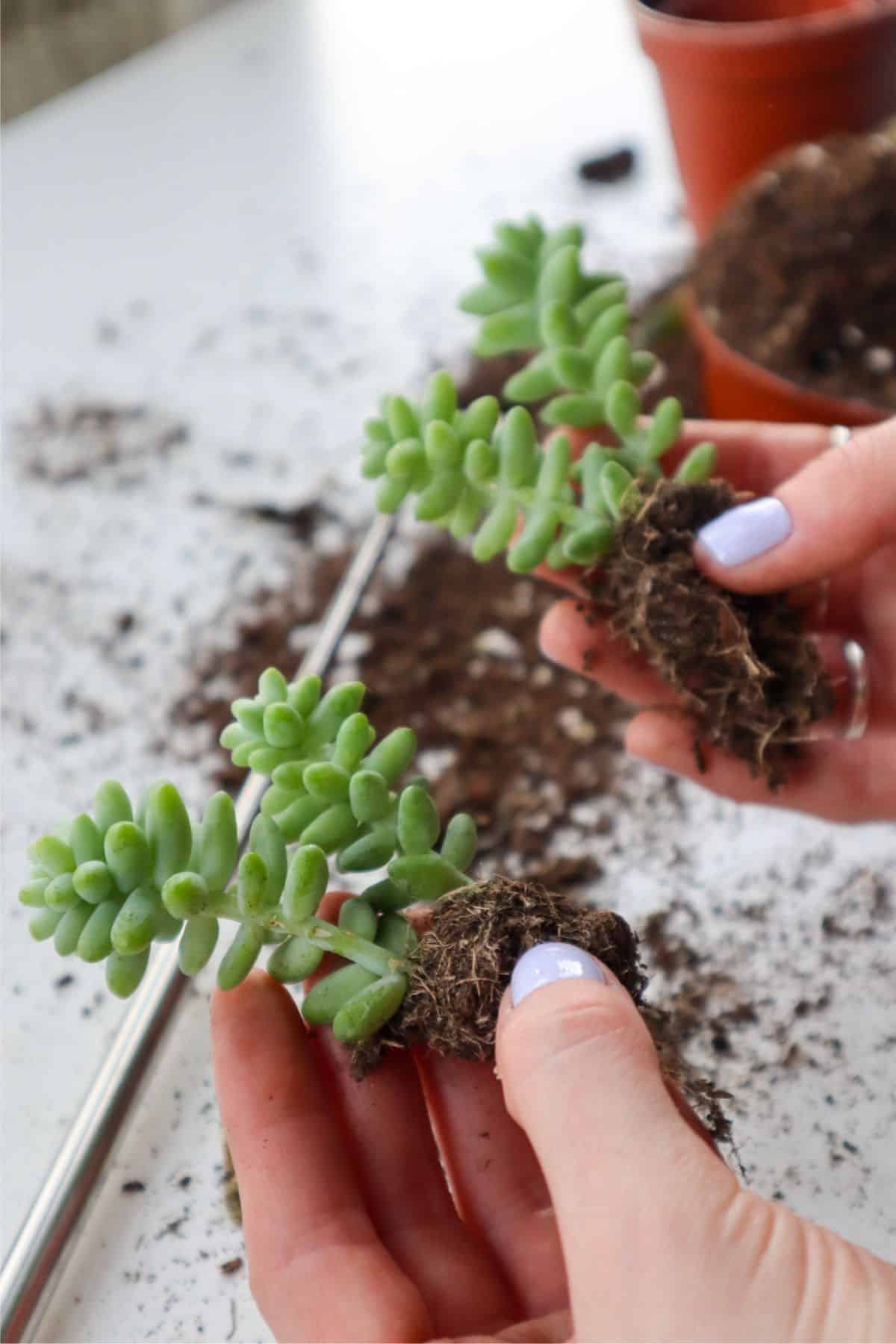
Because many succulents are rosette-shaped, contrast can be difficult to create in a succulent terrarium. This is where Sedum morganianum shines – it’s excellent for adding complexity.
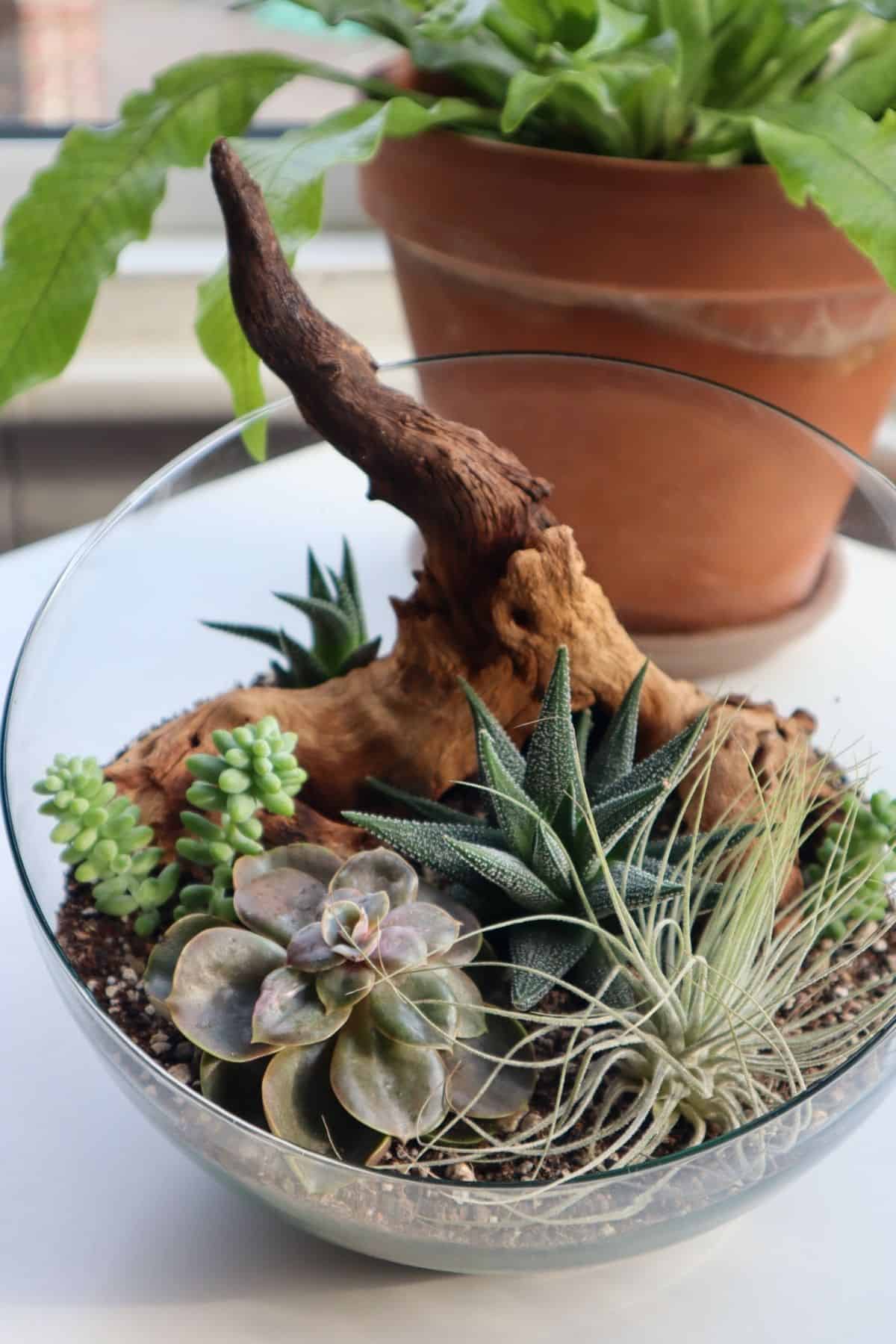
👉 Shop Sedum ‘Burrito’ on Etsy.
And if the Burrito hasn’t captured your heart, why not take a look at some of the other plants in the Sedum genus – there’s plenty to choose from! How about the pink Sedum ‘Jelly Bean’?
3 | Crassula ovata ‘Minima’ (Jade Plant)
You can’t go wrong with a Jade Plant.
They’re reliable, resilient, and ready to bring some tree-like energy to your succulent terrarium.
Even though Crassula ovata plants can get large, they’re very slow growers, and the ‘Minima’ dwarf variety is even more petite and terrarium-ready.
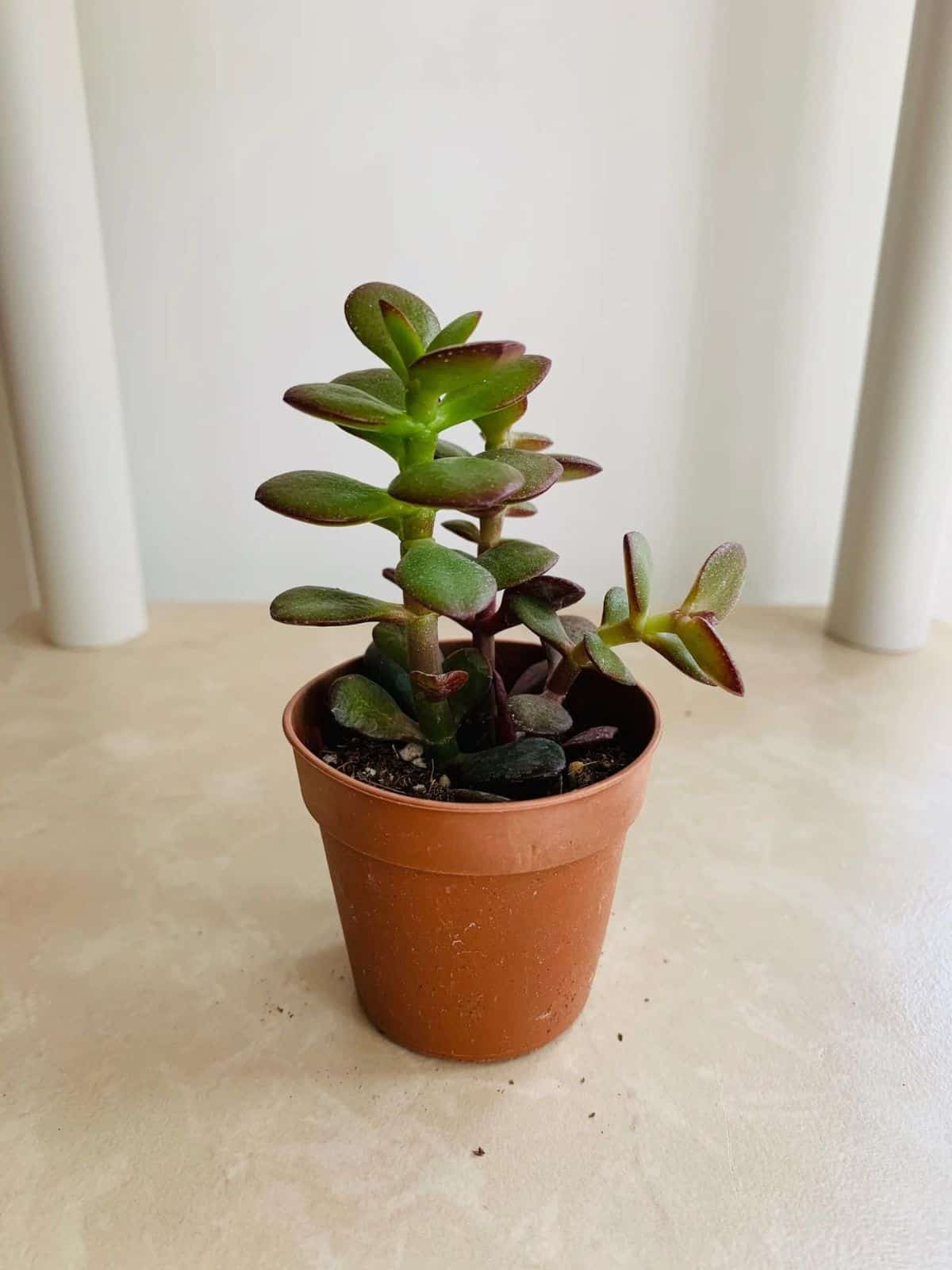
👉 Shop Crassula ovata ‘Minima’ on Etsy.
4 | Haworthia
Haworthia are the punk rockers of the succulent world.
With a (usually) spiky leaf shape and a whole host of unique stripes and spots, it’s an undeniably edgy genus.
With over 100 species and varieties, you’re bound to find something you love. You could try the stripy Zebra Haworthia or the alien-like, juicy Haworthia Cooperi.
While some succulent genera grow massive, Haworthia tends to stay dainty, growing in volume but not particularly in height – perfect for a terrarium project.
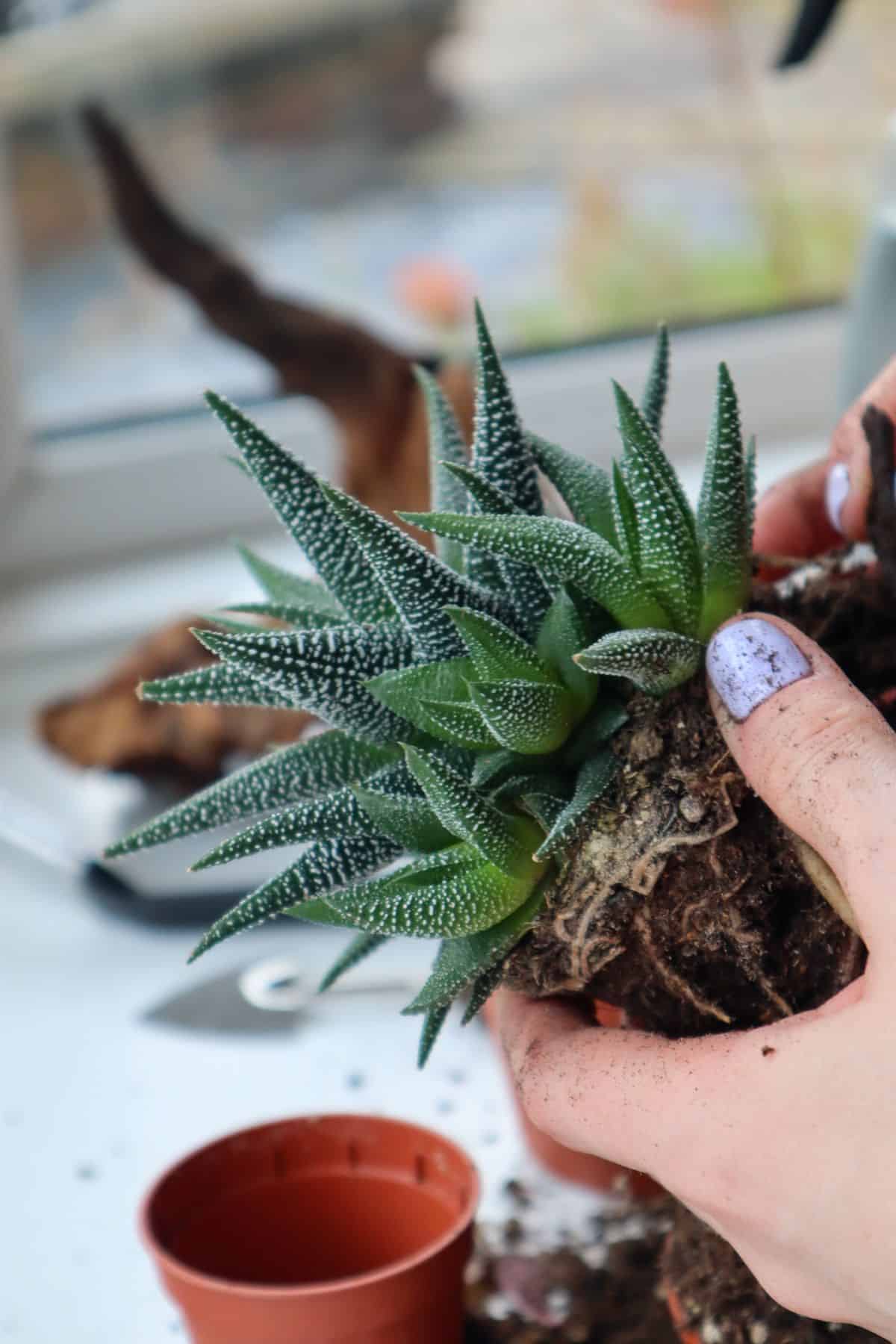
5 | Kalanchoe tomentosa (Panda Plant/Chocolate Soldier)
What’s so good about open terrariums, you ask? You can put your hand in and enjoy the soft, velvety fur of the Panda Plant whenever you like.
With fuzzy pale turquoise leaves and chocolate-brown tips, this delightful plant is serving mint-choc-chip vibes and bringing some much-needed texture into the mix.
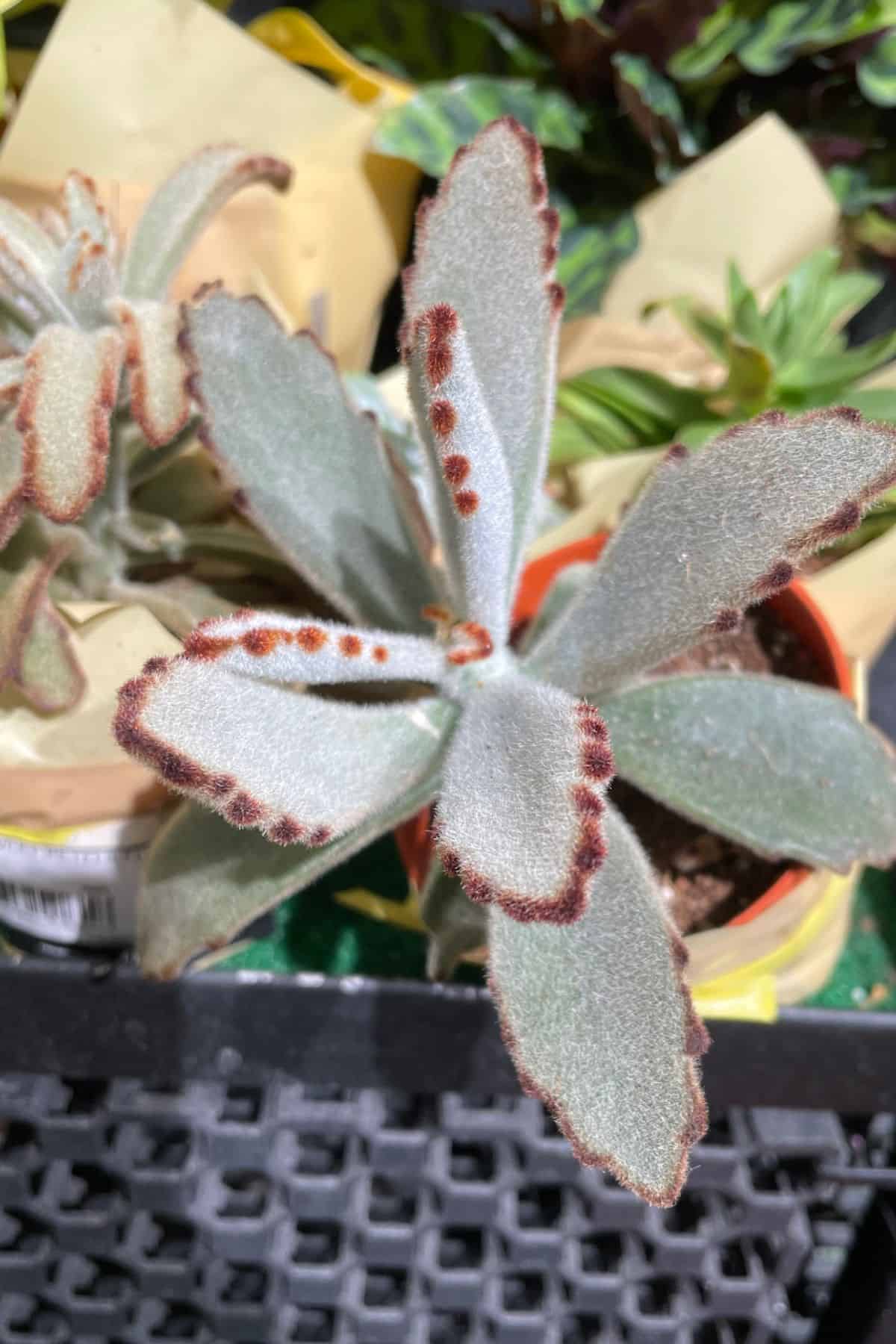
It’s not just the furriness that makes this plant a fabulous choice; it’s also a super slow grower to make your life easier.
👉 Shop Kalanchoe tomentosa on Etsy.
If you’re looking for something more tutti-fruity than chocolate mint, why not give the bright Kalanchoe thyrsiflora a go?
6 | Curio rowleyanus (String of Pearls)
This list is crying out for a vine – and what more luxurious way to satisfy that need than with pearls?
Curio rowleyanus is a fabulous succulent vine with vivid green bead-shaped leaves attached to a central …string.
One of the best things about an open terrarium is the freedom to place plants in and out of the glassware. No lid – no need for the plants to stay in!
You could try using the String of Pearls as ground cover to brighten up the soil or plant it terrestrially and allow it to cascade from the glassware.
Whatever you do with it, it will look fabulous.
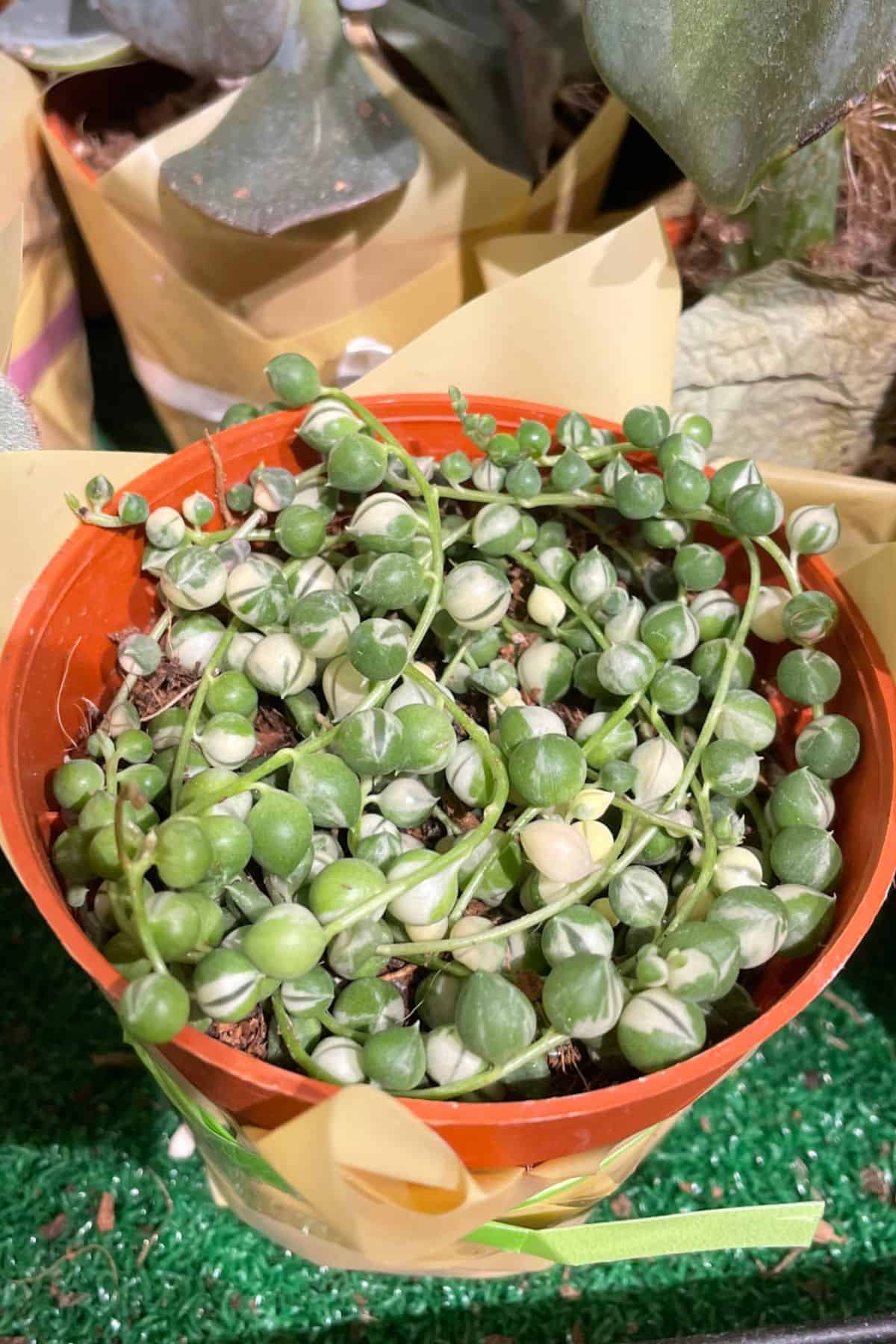
👉 Shop String of Pearls on Etsy.
7 | Sempervivum (Hens and Chicks/Houseleek)
Thought the food and animal references were over? Not yet!
The Sempervivum genus goes by ‘Hens and Chicks’ and ‘Houseleek’ – how ridiculously hilarious.
They’re vibrant, they’re fleshy, and they’re colorful.
Most often, they’re identifiable by the tips of their leaves being a contrasting color to the rest of the leaf, sometimes with a gradient.
The most common is Sempervivum tectorum (the common houseleek), but there are many to discover. According to Wikipedia, there are around 40 species, but I wouldn’t be surprised if there were more new varieties.
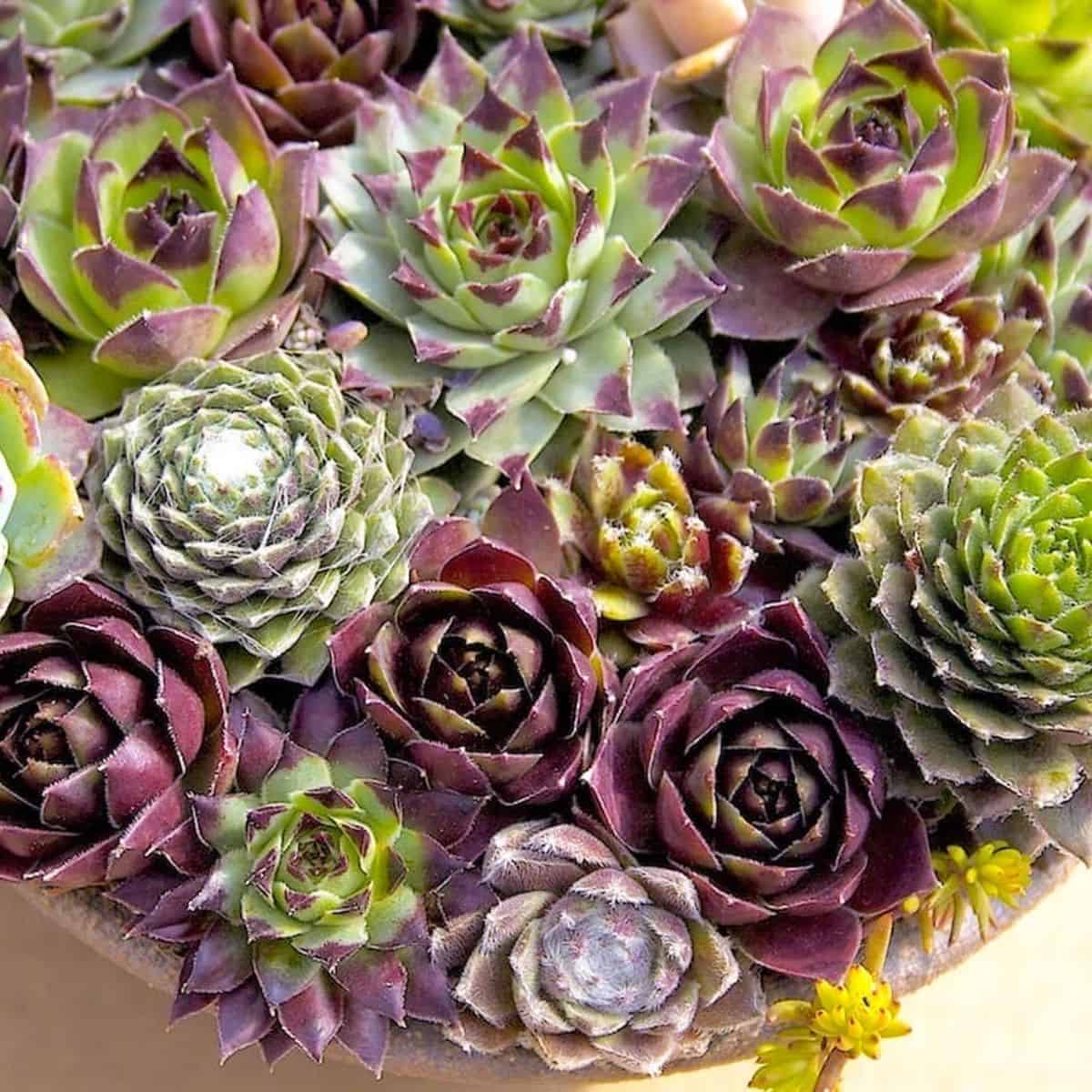
Succulents for Closed Terrariums?
As promised, if you’re looking for a way to combine succulents and closed terrariums, there might still be a way…
Enter, Peperomia.
While they wouldn’t traditionally be considered succulents, their plump leaves beg to differ. That is, some of them; the genus is over 1000 species strong, so sweeping statements don’t particularly work here.
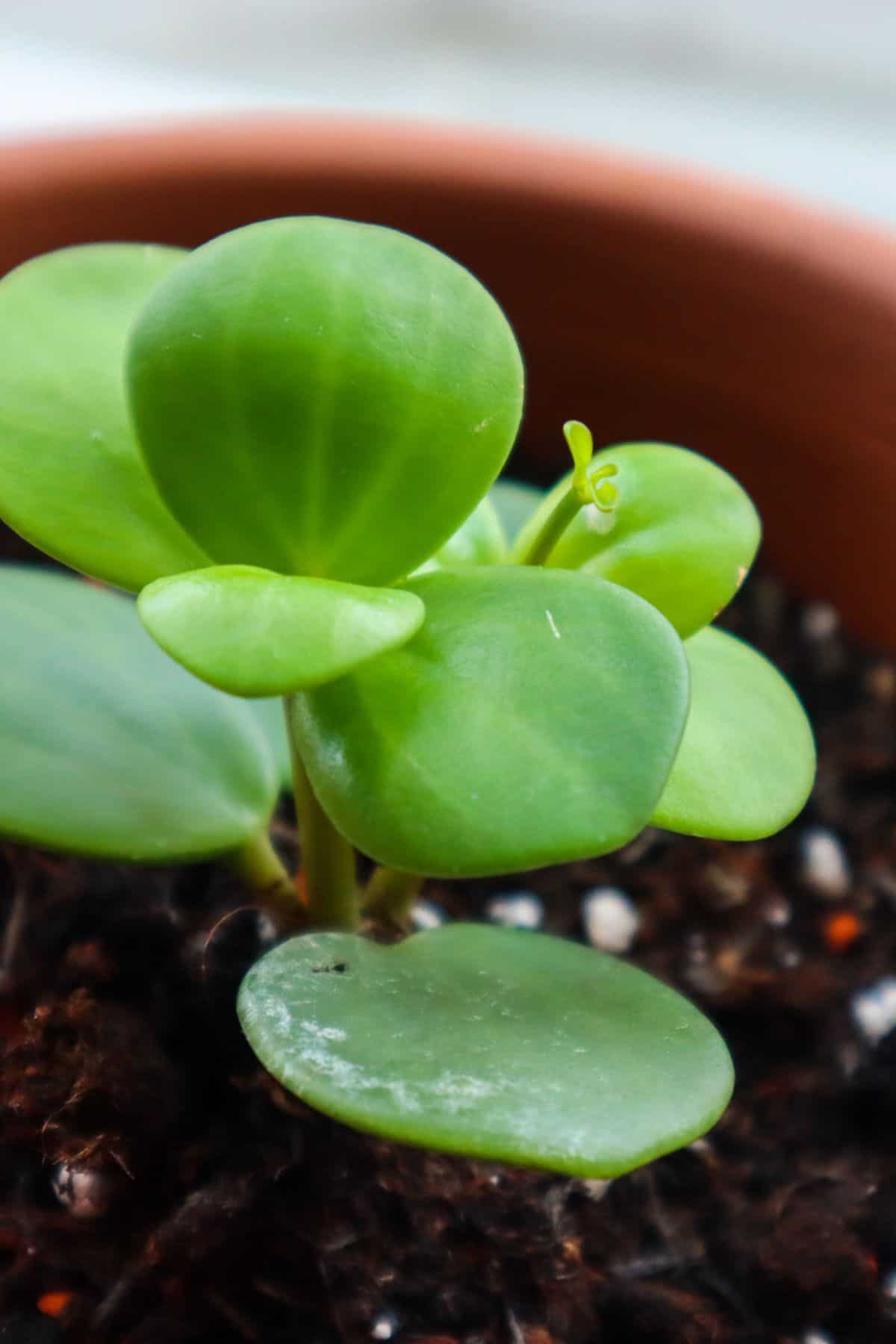
While most succulents evolved in an arid environment, Peperomia evolved on tropical rainforest floors.
This means they’re compatible with other terrarium plants that prefer indirect light and are perfect for the humid environment created by a closed container.
Want to know more? Check out our plant profiles on Peperomia tetraphylla ‘Hope’, Peperomia prostrata, and Peperomia caperata ‘Rosso’.
That’s it for Today
While I’m a tropical plant girl at heart, I’m ready and willing to be tempted by an exciting succulent…
What’s your favorite succulent for terrariums? Share it in the comments!
